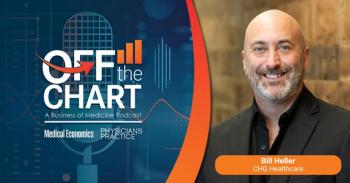
An effective communication strategy can improve practice efficiencies
With an effective communication strategy administrative burden won't be an obstacle to quality care.
When physicians were asked to name their top challenges in a recent survey, they overwhelmingly chose “
The ongoing effects of the coronavirus pandemic resonate well beyond hospital settings, impacting medical practices in myriad ways. Practices still are playing catch-up with patients who avoided visits during the initial pandemic shutdowns and who remain leery of in-person visits as variants surge.
Practice efficiency is a good news/bad news scenario, with the need for
Savvy practices are exploring how to become more efficient by using a communications platform that allows personalized, HIPAA-compliant, one-to-one and one-to-many communications that can help engage patients in their care while creating practice efficiencies.
Respect the Patient at Each Interaction
Small changes to practice workflows can have an oversized impact on overall
Any practice contemplating changes must realize that patient interactions must remain the core focus. At many practices, it’s already impossible to speak with a live person after negotiating a phone tree or sending an email through the patient portal. Frustrated patients are less likely to be satisfied by their care experience and to recommend the provider to friends. Which is why it is imperative that any communications platform must put patients front-and-center, with easy and secure interactions that don’t require the patient to download yet another mobile app.
Instead of the ubiquitous appointment reminder phone call – which takes staff time away from more value-added duties and patients away from whatever they were doing when the phone rang – how about a personalized text message from the provider’s main phone line confirming the appointment? The patient can quickly confirm the appointment or call up the provider’s schedule to pick another time.
Accomplish More Through Text
Younger patients probably aren’t answering those reminder calls anyway, preferring a quick text. A communications platform with HIPAA-compliant texting can create efficiencies within the practice in numerous ways besides appointment reminders, allowing staff to have one-to-many asynchronous conversations rather than one-on-one phone interactions.
Fully 85% of American adults
To leverage texts in a medical setting, patients must first opt in to receive messages to comply with the Telephone Consumer Protection Act (TCPA). Practices want a communications platform that’s HIPAA-compliant and allows communications with a particular patient to become part of that patient’s medical record.
How often does your practice get calls about directions, parking or practice policies? Templated responses answered by text rather than phone will free up staff time and increase the percentage of on-time patient arrivals. One physician using a HIPAA-compliant,
Onboarding and front-end practices also can be accomplished by text. Sending pre-appointment forms to be completed ahead of time can make the day-of visit go more smoothly. Practices want a platform that can track communications so only those who haven’t filled out pre-appointment paperwork, for example, receive reminders.
Provide Better, More Timely Patient Care
In a truly patient-centered practice, patients shouldn’t need to take additional steps to communicate with the practice, such as download an app or remember log-in credentials for the patient portal. Mobile devices are convenient, handy and the preferred communications method for an increasingly tech-savvy population.
A communications platform that includes secure photo and video capabilities reduces significant barriers that exist between patient needs and provider time.
Telehealth visits comprised a microscopic portion of total medical visits prior to the pandemic. Between February and April 2020, however, the use of telehealth skyrocketed by a factor of 78. While the numbers have declined since then, the use of telehealth remains
Besides synchronous video, asynchronous communication through text or photographs can increase patient touchpoints and satisfaction while making the practice more efficient. A dermatologist can look at a patient-submitted photo and determine whether a skin condition is harmless or warrants an in-person visit. A surgeon can look at a photo of an incision and determine whether it is healing properly.
Asynchronous communications can also be used to help patients manage their chronic conditions. When the communications platform is integrated with the practice management system, personalized and templated messages can be sent to certain patient cohorts at pre-determined times. A cardiologist, for example, can request blood pressure readings for at-risk patients, or a general practitioner can request blood glucose numbers for diabetes patients. If the numbers look good, the provider can send a positive note that encourages future compliance, while negative numbers may require an appointment.
Conclusion
Medical practices have made efficiency strides during the pandemic, but those strides have been blunted by higher costs. Secure, HIPAA-complaint asynchronous and synchronous communications can help the same number of staff to manage more patients, preserve provider time for the sickest patients and create workflow efficiencies.
Brendan Dagg is vice president of product at Rhinogram where he focuses on relationship management and workflow efficiencies, using modern communication tools to enhance patient experience.
Newsletter
Optimize your practice with the Physicians Practice newsletter, offering management pearls, leadership tips, and business strategies tailored for practice administrators and physicians of any specialty.








